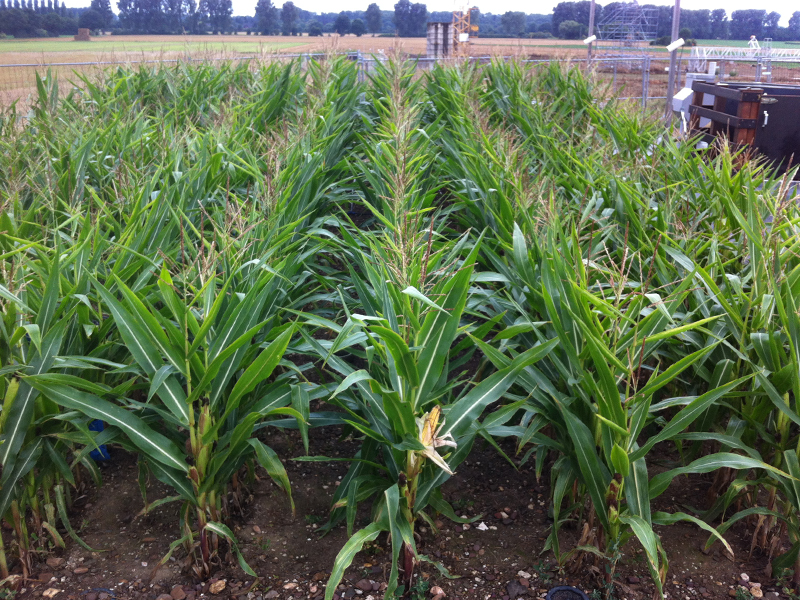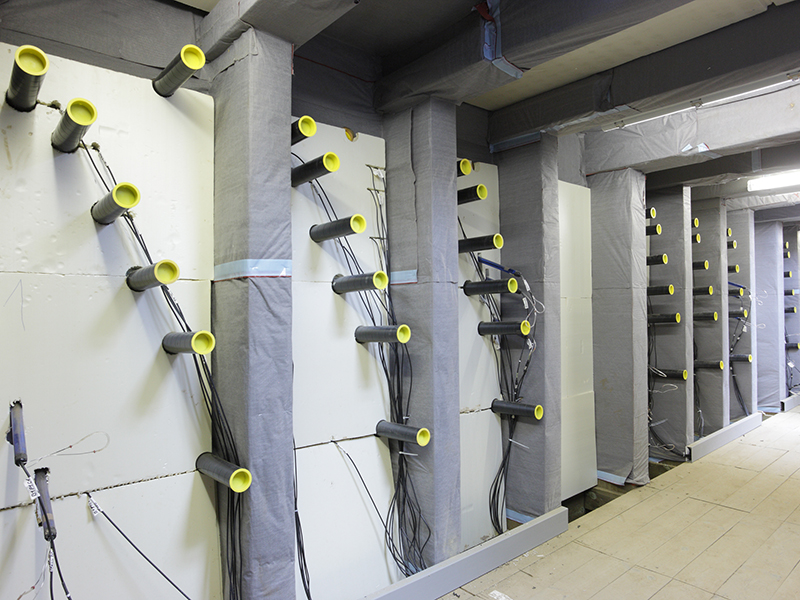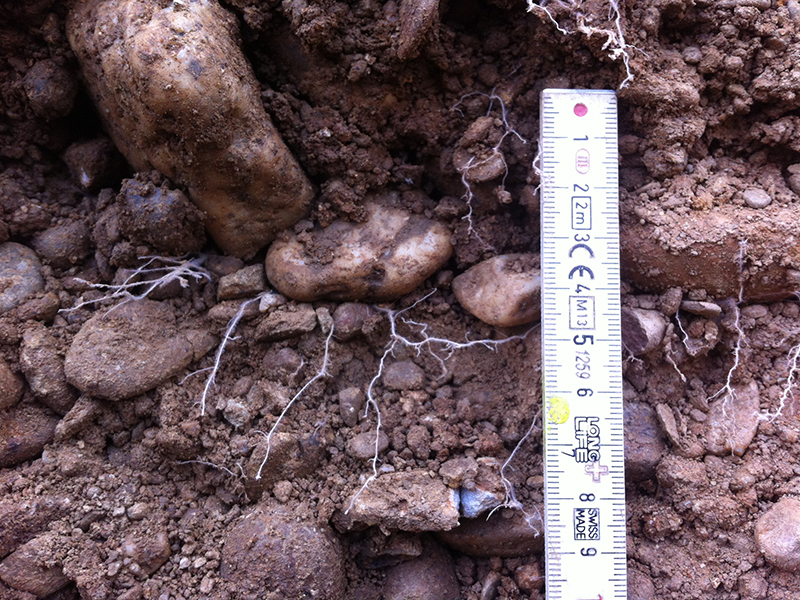Between a rock and a hard place
August 30, 2021 - Eric Hamilton
Hidden under our feet lies an entire unseen world. The soil teems with life. Microbes, small animals and fungi all call the darkness home. And so do plants. At least the half of them that we know as roots.

Roots must contend with a slew of challenges. Pests, too little water (or too much) and even other plant roots can all damage or slow down roots. But perhaps the largest obstacles, literally, are rocks.
Plant roots are tough. But they’re not strong enough to break through rocks. So, they’ve learned to go around them, though at the cost of time and energy. Rocky soils also affect factors like how much water the soil can hold. Farmers set up shop on top of many different kinds of soils, some of them very rocky. So, it’s vital to understand how rocks affect the roots of our most important crops.
That’s what Shehan Morandage and his colleagues set out to study. In a new research paper, they analyzed how the roots of wheat and corn adapted to soils with different rock contents. And because of the challenges in directly measuring roots, they also developed a model that can help them simulate these adaptations.
The paper was published in Vadose Zone Journal, a scholarly publication of the Soil Science Society of America.
Studying roots in the real world is always challenging. Morandage’s team used a group of trenches known as mini rhizotrons. These underground laboratories dig beneath the surface to reach the soil underneath. A series of transparent, horizontal tubes allowed the team to send cameras into the soil to take pictures of roots as they grew.

“Unlike other field root sampling methods, the mini rhizotron method allows us to obtain dynamic root growth data with minimum disturbance to root and soil,” says Morandage, currently a researcher at the University of Hohenheim in Germany. The published research was performed while Morandage was at the Forschungszentrum Jülich.
One field had a stone content of more than 60 percent, while the other had very few rocks. As expected, roots in the rocky soils could not grow as deep as those in softer soils over the course of the growing season. “The presence of stones significantly reduces the ability of roots to reach deeper into the soil,” says Morandage. Both corn and wheat responded in the same way.
Because these kinds of field experiments are not always possible, it’s helpful to develop a model of root growth in the field. Morandage’s team built upon an existing model of root growth by programming it to take into account the rockiness of the soil.

“We cannot quantify how roots alter their growth patterns due to differences in soils by observing root systems in the field or analyzing root sampling data,” says Morandage. “The model helps to study the effect of each soil property separately and how these properties affect the root development.”
The model also predicted that roots would stay shallower in rocky soils, matching their observations. But the model wasn’t perfect. Using the mini rhizotron, the scientists saw that the cracks found in the less rocky soil allowed roots to grow densely deep into the soil. But the model didn’t predict this outcome, because it made simpler assumptions about how roots would respond to those cracks.
The model also simplified things by only paying attention to the roots. But roots work together with the aboveground portions of the plants. For example, more green tissue could provide more energy to roots. And the leaves and stalks also varied depending on the rockiness of the soil, which means that there might be a relationship between soil properties, shoot growth and root growth.
In the future, research may shed more light on this swirling mass of roots hidden in the dark beneath our feet.
